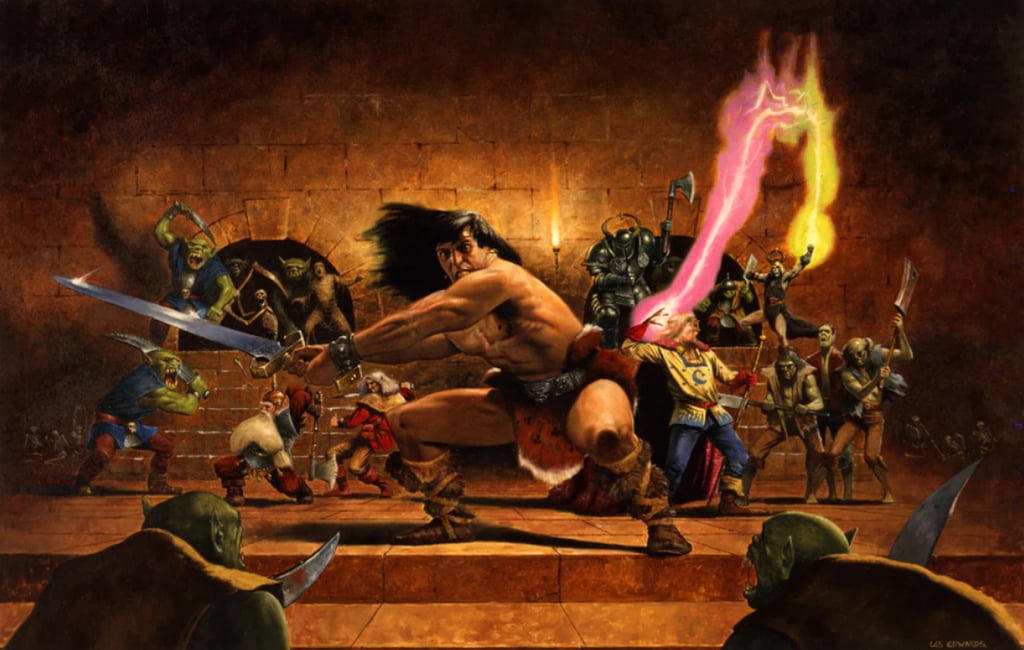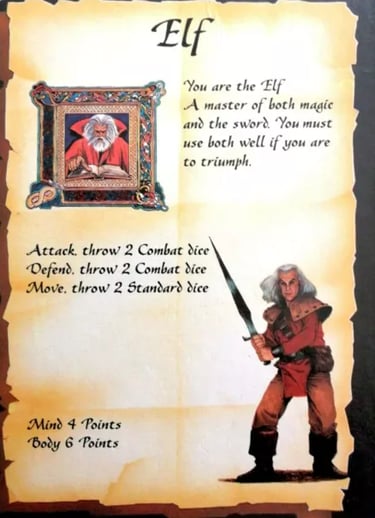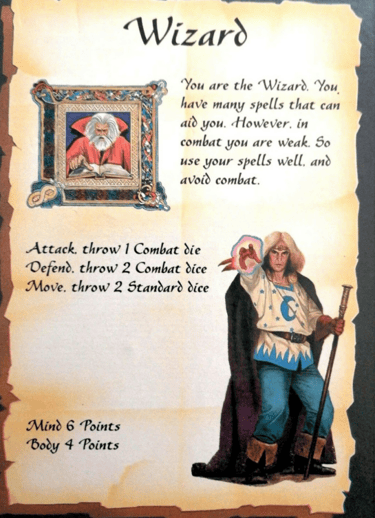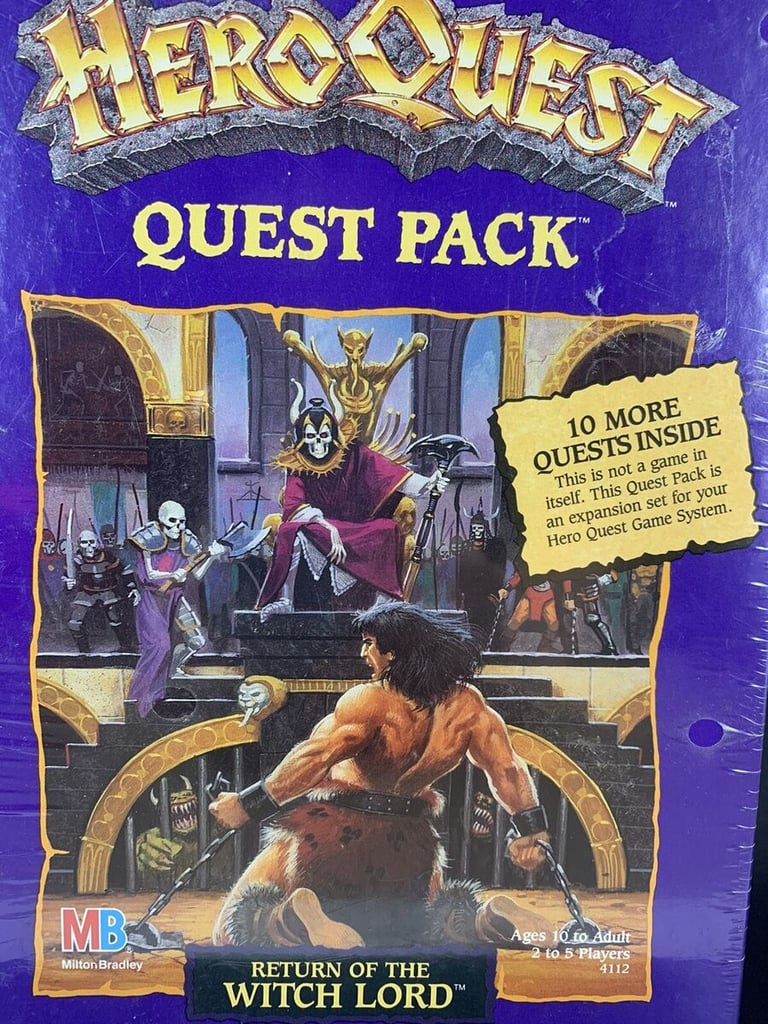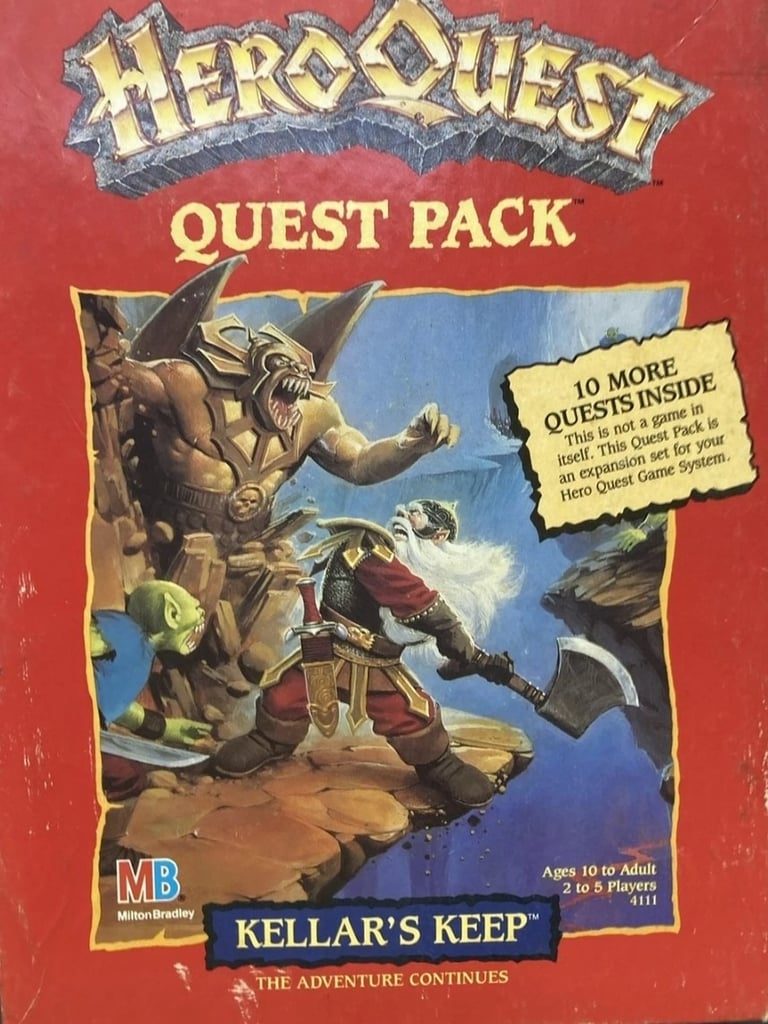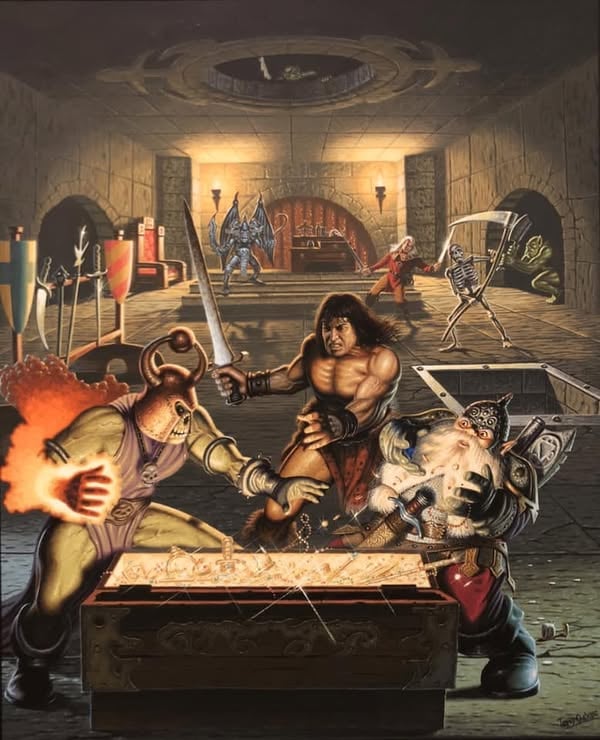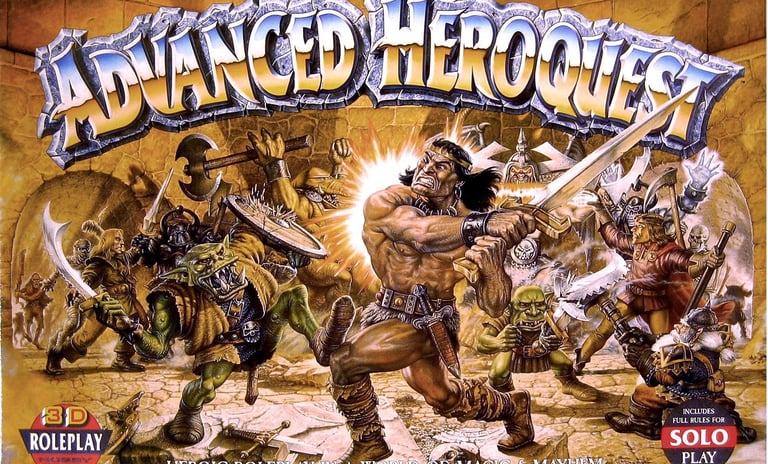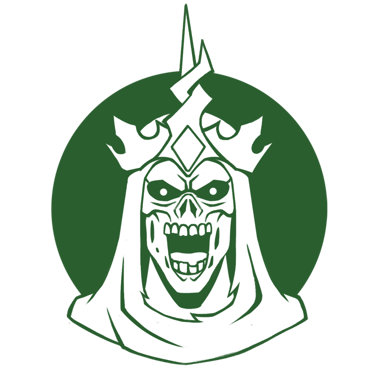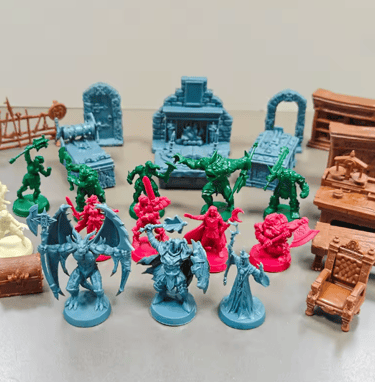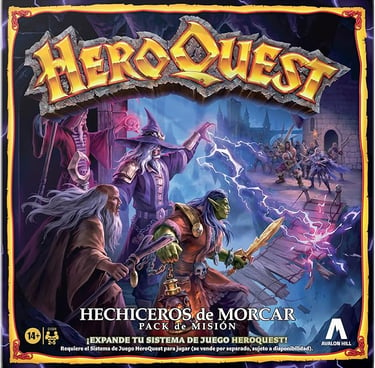Les Edwards - English version
ENTREVISTAS


To speak of Les Edwards is, inevitably, to speak of HeroQuest. Why? Because he was the artist responsible for bringing the original 1989 game box to life, as well as the majority of its expansions.
It is a genuine pleasure to welcome Les back to the world of HeroQuest, as he shares his memories from those formative years of his career. We hope you enjoy this interview with such a remarkable artist.
Special thanks to HispaZargon from Ye Olde Inn for his collaboration in developing the questions for this interview.
Full interview with Les Edwards
Hello Les, it is a genuine honour to have the opportunity to interview you. Reviewing your career as an illustrator is a daunting task, given its breadth and richness. Attempting to cover it in its entirety within a single conversation would be impossible, so if you agree, we will focus this interview on your contributions to the fantasy genre—particularly those related to HeroQuest, a game that serves as the primary inspiration for this website and its devoted fan community.
1. To begin this interview, could you tell us a little about your early days? What led you to dedicate yourself to enriching worlds of fantasy and horror through illustration? Why did you choose the painting techniques you employed, as opposed to others? Which artists have been your main references or influences throughout your career?
Les Edwards: When I started illustrating after leaving Art School I began to do covers for Horror anthologies. Every publisher back then had to have a line of Horror collections, largely, I think, in imitation of the Pan Books of Horror which were very successful and fondly remembered to this day. I don’t think there was another illustrator around at the time who specialised in that sort of thing so it was a niche waiting to be filled. I know some of my fellow artists felt that Horror was rather beneath them but I enjoyed it and I enjoyed Horror stories. And was glad of the work so it seemed a natural fit.
In the UK at the time there was very little Fantasy as we have come to know it. It was nothing like the industry that we see today and not that many people were aware of The Lord of the Rings or Gormenghast or Conan the Barbarian and genre fiction was largely confined to Science Fiction, with Horror and Ghost stories trailing some way behind. SF illustration was mostly divided between Chris Foss, who did all the lovely big spaceships and Bruce Pennington who did more character focused paintings with, what we would now call a fantastic and slightly hallucinatory feel. The start of my career coincided with a lot of Foss imitators arriving on the scene but Pennington was a much bigger influence on me and remains so to this day. In my childhood my artistic heroes were Frank Bellamy and Frank Hampson who both drew for The Eagle comic. Bellamy was a particularly strong influence with his strip Heros The Spartan which was a kind of early Sword and Sorcery, very dark and mysterious and very much to my taste. There was nothing else quite like it around then. I always quote it as my biggest influence.
As far as my technique was concerned, it evolved quite quickly, which happens when you paint all day, every day. While I started out using Designers Gouache ( a kind of opaque watercolour ) I switched to Oil paint after a couple of years as it seemed more flexible and more suited to some of the effects I was after.
2. What are you currently working on? Are you still involved in creative projects? Have your working methods evolved over time, or do you continue to use a similar approach to that of your early years.
LE: I am still painting but I’m really retired from commercial illustration and I very rarely take on commissions. I find it difficult these days to put in the hours required and maintain the necessary concentration levels so I like to take my time over each painting. Deadlines would not be welcome.
3. Is there a fantasy or horror universe you would have liked to work in but never had the opportunity? Are you less drawn to science fiction than to heroic or medieval fantasy.
LE: Like many artists I’ve always wanted to have a go at Michael Moorcock’s Elric. He’s such an intriguing character and it’s a fascinating universe. I’ve started to work up a picture on several occasions but never made it to the actual painting stage. There is a quality to Elric that eludes me so far and I can’t put my finger on what it is so the painting will have to wait until I can identify it.
4. Let us now talk about HeroQuest. The box artwork for the game and most of its expansions bear your signature. How did the opportunity to work on this project arise? Was your involvement due to your previous illustrations for Conan, or were there other factors? Were you contacted by personnel from Milton Bradley or Games Workshop? Did you work directly with Stephen Baker, the game’s creator? Do you still have the original artwork, or do you know whether any of the pieces are on display somewhere?
LE: The Heroquest job came, as all jobs did, through my agent. The fact that I’d been doing covers for Conan was a factor I’m sure, but I’d also been doing a lot of stuff for Games Workshop so I was familiar the kind of thing needed, even though I was not a gamer.
I don’t recall having any contact with Stephen Baker. By the time I came on the scene the format and design of the game were set I think. I was just called in to provide the packaging. All the artwork was sold to the company as part of the deal. I was very well paid so I have no complaints but in later years I could have sold those pieces over and over. I don’t know where the artwork is now, probably gathering dust at the back of a drawer somewhere.
5. What was the working process like for this legendary game? Were you given creative freedom, or were there specific instructions regarding composition, colour palettes, or characters? Did you ever speak with Bob Naismith or any of the miniature sculptors to coordinate the artwork? Do you recall any relevant anecdotes from the process? Could you tell us how long, on average, each illustration took you from the first sketches to completion?
And one specific curiosity: your artwork features vast caverns and narrow bridges—was that a choice of yours, or was it directed by the design team?
LE: Initially the client wanted a kind of mash-up of all the characters, with each one being given equal prominence. I was pretty sure that would just be a mess and I was determined that the barbarian should be front and center. Once I produced my initial sketch they went with the idea and from then on I was allowed the freedom to come up with my own compositions. The miniatures had already been designed so the look of each character was already set and had to be represented reasonably accurately in the painting. I was given a set for reference and tried to stick to the design. It would have been terrible if someone opened the box to find the miniatures didn’t look like what was on the box top. I had once been given a tour of the Games Workshop studios so I was familiar with the fantastic work of the figure sculptors and I wanted to do them justice.
I don’t recall how long each illustration took but I would imagine the game box would have taken about three weeks to paint, but from preliminary sketch stage to finished artwork could have been months. I was doing other work at the same time.
The caverns and bridges and the general look of each painting were mine. They were inspired to some extent by the engravings of an artist called Piranesi who drew vast dungeons and prison buildings.
6. Of course, the illustration of the Barbarian on the HeroQuest character cards is your creation, and we know the Dwarf was illustrated by John Sibbick. As such, fans sometimes wonder about the authorship of the remaining two images (Elf and Wizard). Can you confirm whether you also created the Wizard and the Elf illustrations? Regarding the Dwarf, this image became the symbol of White Dwarf magazine from 1987 onwards - years before the game was released. Were you ever asked to create a new illustration for Dwarf’s character card in HeroQuest, or had the decision already been made to reuse the iconic magazine image?
LE: Both the Elf and the Wizard are mine, again based on the miniatures. I wasn’t asked to do the Dwarf. After all I couldn’t improve on John Sibbick’s fantastic work. In many ways it is “The” definitive dwarf. However I do think the use of another artist with a distinctly different style makes the set look a little odd.
7. Did you have either a professional or personal relationship with other legendary Games Workshop artists of the era, such as John Blanche, Tony Ackland, Gary Chalk, or Bob Naismith? We know Gary Chalk also contributed artwork for components of the game. Did you ever exchange opinions or ideas? Are you still in touch with any of your fellow illustrators from that time?
LE: I knew John Blanche when I was working with Games Workshop and I think we got on well. Tony Ackland too, and I still hear from him occasionally. I don’t remember the other two but it was a long time ago.
8. The 1989 American edition of HeroQuest included four expansions. The illustrations for Kellar's Keep and Return of the Witch Lord were reinterpretations of your work, carried out by Jim Talbot. The other two, The Mage of the Mirror and The Frozen Horror, were not released in Europe and were illustrated by Don Kueker and Rick Grayson, respectively. Were you familiar with these artists at the time? Did you have any contact with them or involvement in the decision to bring them on board?
LE: I didn’t know anything about the American edition and I’ve never seen the images in question.
Regarding the expansions, I've searched in Google and had a look at the US expansion packs. As you say they're direct copies. I could imagine that, in some way, the originals might be unsuitable for the US market and they might want new covers but I can't see the point of just having copies made. What's the difference?
9. There is a well-known illustration by Terry Oakes that shows HeroQuest characters confronting a treasure chest while a battle rages in the background. It is said that this piece was intended to serve as the cover for an expansion. Do you know which expansion that might have been, or why the image was ultimately not used? Were there other illustrations planned for future expansions beyond those you completed?
LE: I know the Terry Oakes piece but I don’t know what it was for. The fact that Terry painted it means it was certainly intended for something. Terry is still around so he might be able to tell you. His affairs are handled by his son Andrew but I don’t have any contact details for him I’m afraid. You should be able to track him down. I know Andrew sells prints of Terry’s work but I don’t know if the Heroquest one is available.
10. Another game released around the same time by Games Workshop was Advanced Heroquest, whose cover artwork was by John Sibbick. It portrays a combat scene featuring the same heroes from your iconic Barbarian illustration. Were you ever approached to illustrate the Advanced Heroquest cover as well?
LE: I was never approached about Advanced Heroquest. I never realised that illustration was john Sibbick’s.
11. What is your view on the current state of illustration? Do you feel there is now too much reliance on technology, or do you believe mastery of traditional techniques remains fundamental? And a timely question: what are your thoughts on the use of artificial intelligence in image generation? What advice would you offer to the new generation of artists in this regard?
LE: I think my kind of illustration is largely dead although a few brave souls soldier on and I salute them. Almost everything is produced digitally and some of it is very fine. There are some fantastic people working with digital media but soon even those artists will be replaced by AI. It’s much easier, and cheaper, for a client to get an AI program to produce an image than to deal with some crazy artist person. I don’t know what the future of illustration will be but I fear it won’t be in the hands of humans.
12. To wrap up, a couple of lighter questions that are sure to interest the fans: have you ever played the classic 1989 edition of HeroQuest, or the newer 2021 edition? Do you have a favourite board game?
LE: I’m sorry to disappoint the fans but I’ve never played Heroquest and I do not play other board games. I am a very occasional computer gamer but really gaming has never been part of my life.
13. And finally, do you think there is any chance—even a remote one—that you might one day return to work on the HeroQuest franchise, now that Hasbro has revived the game?
LE: I can’t imagine being tempted out of retirement now, but never say never. It would have to involve a very healthy fee.
Les, thank you so much for giving us your time and for sharing so many insights into your career and your involvement in the HeroQuest universe. Your work has left a lasting mark on an entire generation of gamers and fantasy enthusiasts, and it continues to inspire and captivate to this day. The illustrations you created for HeroQuest not only brought the game to life, but they were also instrumental in forging its visual identity and enduring legacy. Undoubtedly, without your art, the memory of HeroQuest would not be nearly as vivid or as powerful.
It has been a true privilege to speak with you.
